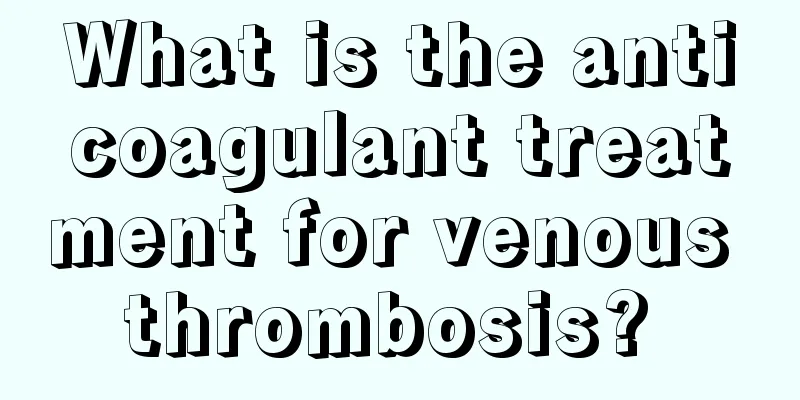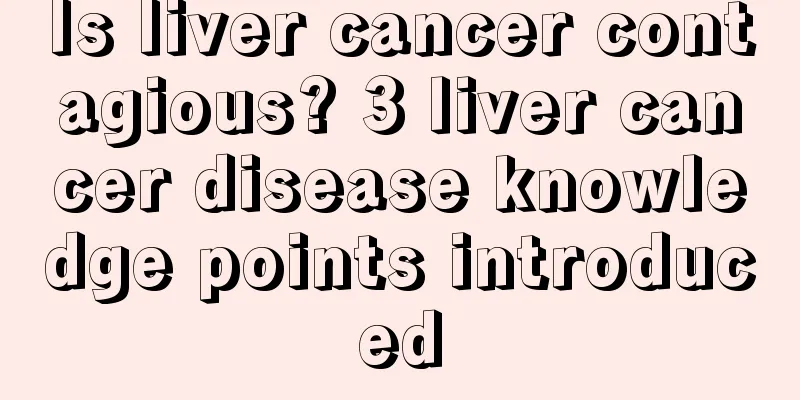What is the anticoagulant treatment for venous thrombosis?

|
Anticoagulation therapy for venous thrombosis is designed to prevent blood coagulation in the veins, in order to relieve and treat venous thrombosis. Generally, patients who use anticoagulant treatment for venous thrombosis need to do so for a long time, because this is the only way to inhibit the deterioration of the disease. Some patients suffer from venous thrombosis due to surgery. These patients need about three months of venous thrombosis anticoagulant treatment, which is a relatively effective cycle. Venous thrombosis and anticoagulation is a relatively common disease, and the chance of occurrence is even higher in certain positions, so friends should pay more attention. 1. Long-term or extended anticoagulation therapy 1. For patients with proximal DVT or PE, long-term anticoagulation (3 months) is recommended for patients who have not received anticoagulation therapy. (Recommendation level 1B) 2. For patients with leg DVT or PE who do not have cancer, dabigatran, rivaroxaban, apixaban, or edoxaban are recommended as long-term anticoagulant treatment drugs, with priority over vitamin K antagonists (recommendation level 2B). If such patients cannot receive dabigatran, rivaroxaban, apixaban, or edoxaban, vitamin K antagonists are recommended, with priority over low molecular weight heparin (LMWH) (recommendation level 2C). 3. For patients with leg DVT or PE and cancer (cancer-related embolism), LMWH is recommended as a long-term anticoagulant therapy, with priority over vitamin K antagonists, dabigatran, rivaroxaban, apixaban, and edoxaban (recommendation level 2C). 4. For patients with leg DVT or PE who have been treated for 3 months, there is no need to change the anticoagulant (grade 2C). 2. Duration of anticoagulant therapy 1. For patients with proximal leg DVT or PE induced by surgery, 3 months of anticoagulation is recommended over short-term anticoagulation, anticoagulation for 6 months or longer, or extended anticoagulation (grade 1B). 2. If the patient suffers from proximal leg DVT or PE caused by non-surgical factors, 3 months of anticoagulation treatment is recommended, which is preferred over short-term anticoagulation treatment or anticoagulation treatment lasting 6 months or longer (recommendation level 1B); if the patient has a low-to-moderate risk of bleeding events, 3 months of anticoagulation treatment is generally preferred over extended anticoagulation treatment (recommendation level 2B); if the patient has a higher risk of bleeding events, 3 months of anticoagulation treatment is recommended (recommendation level 1B). 3. If the patient has isolated distal DVT, 3 months of anticoagulation is generally preferred over short-term anticoagulation (grade 2C), 6 months or longer, and extended anticoagulation (grade 1B). |
<<: What is electroconvulsive therapy?
>>: Will kidney deficiency cause frequent urination?
Recommend
Which department should I visit first for liver cancer diagnosis? Things to note when caring for liver cancer
As we all know, liver cancer is one of the common...
What are right brain memory methods?
The right brain memory method is a memory method ...
What is the treatment for acute urticaria
Skin diseases can cause great harm to people, and...
Why is the goldfish's mouth black?
Goldfish are colorful and graceful. As a domestic...
Can I drink the water boiled in a rusty kettle?
Can you drink the water boiled in a rusty kettle?...
What should I do if I am allergic to river shrimps?
Many people like to eat river shrimps, but many p...
What does a ripened watermelon look like
Watermelon is a must-have fruit in summer. Many p...
What are the disadvantages of putting ginger in the belly button
The human body will accept anything it eats or to...
Time to take deep sea fish oil and precautions
As a health product, deep-sea fish oil is very po...
The life expectancy of patients with hepatitis C is so harmful
Hepatitis C is a type of hepatitis. Compared with...
8 kinds of scents have magical health benefits
Mint: Relieves headaches and improves reaction ti...
Is there a lot of bleeding after the medical abortion?
Sexual life is a way for men and women to communi...
Laceration and eversion are also common causes of cervical cancer in women
Since the cause of cervical cancer has not been d...
You should choose the method of treating lymphoma according to your own characteristics
Experts say that the best way to treat lymphoma i...
What kind of tea is ginseng oolong tea
Oolong tea is a semi-fermented tea that many peop...









